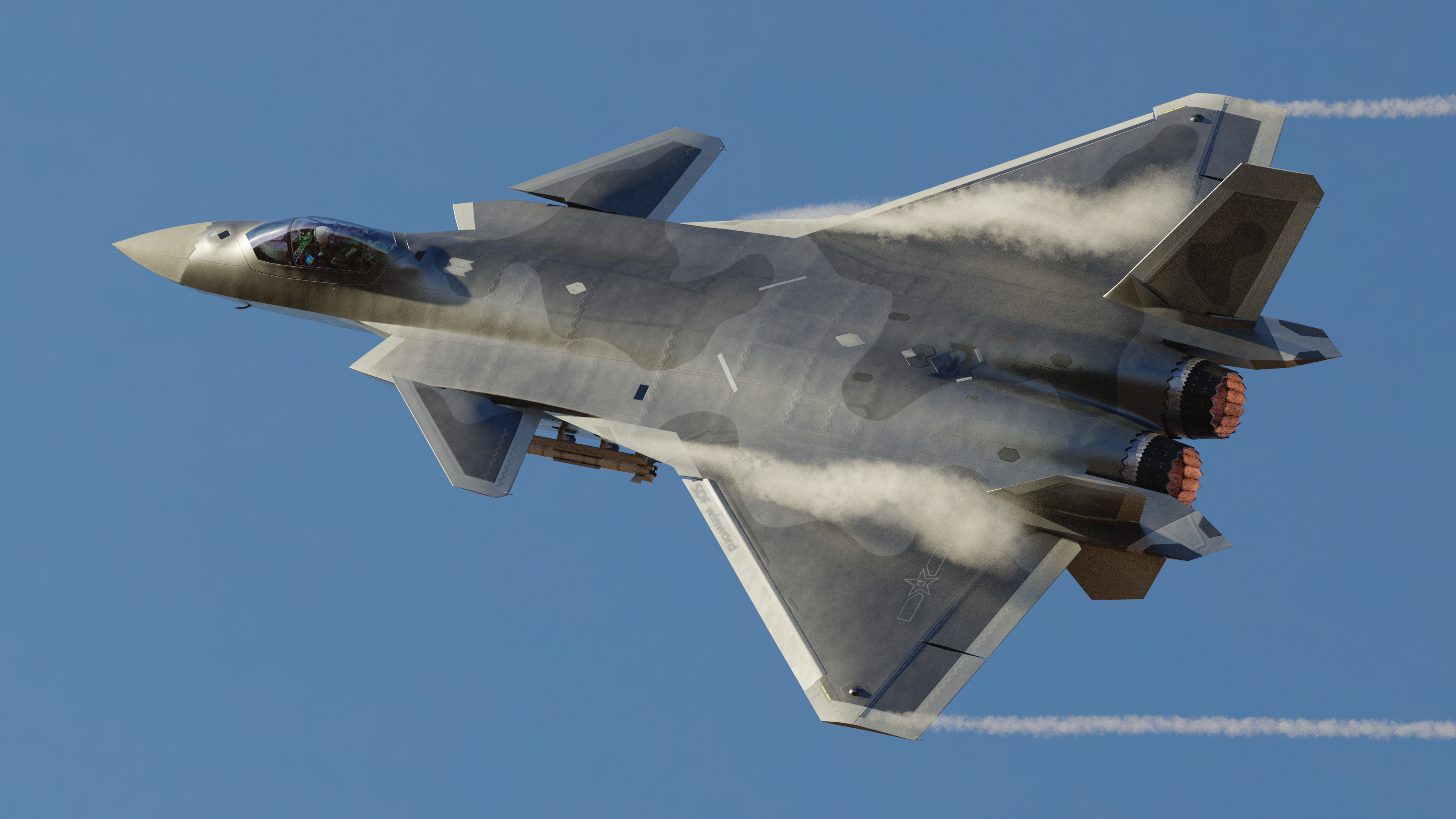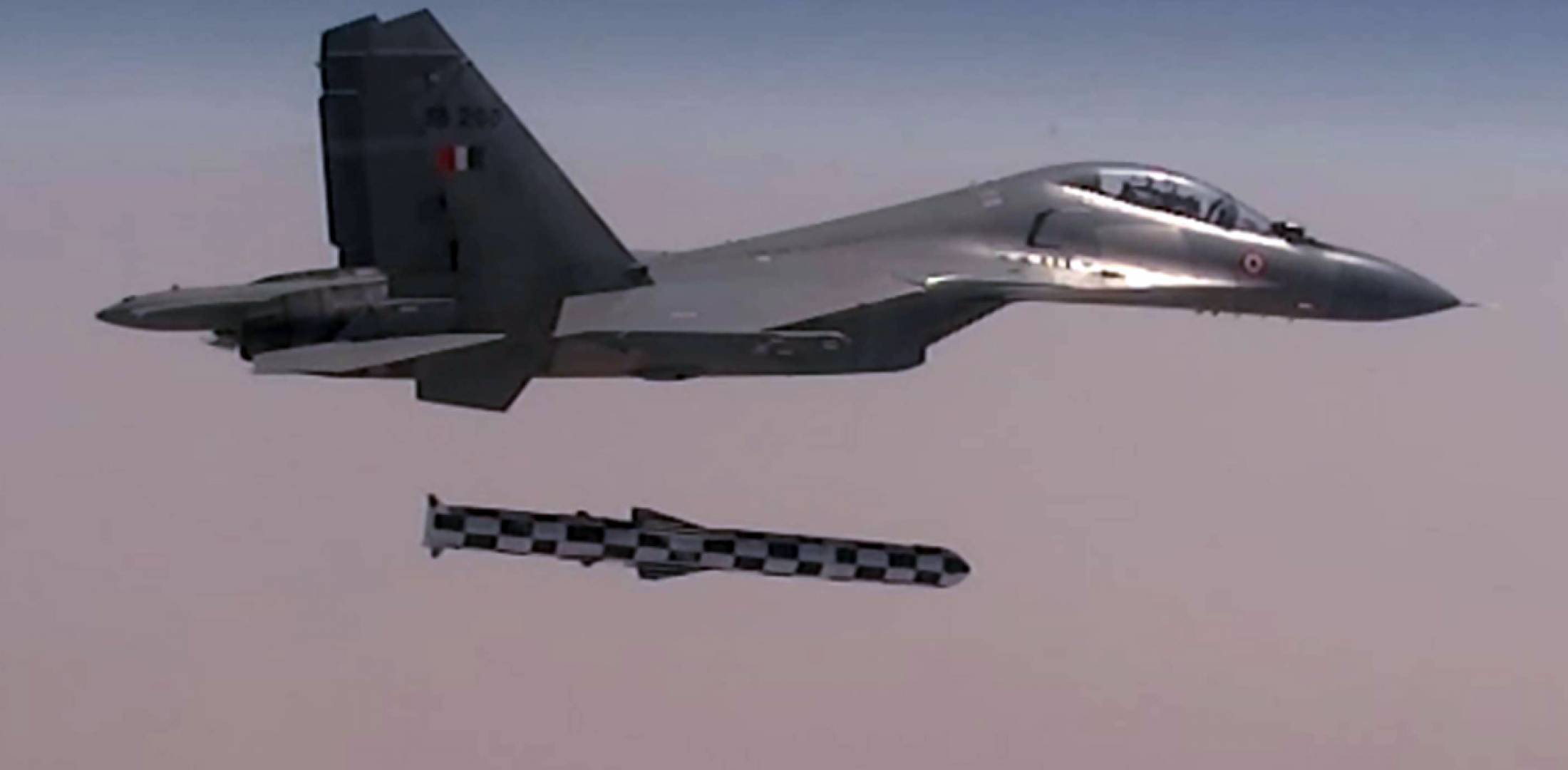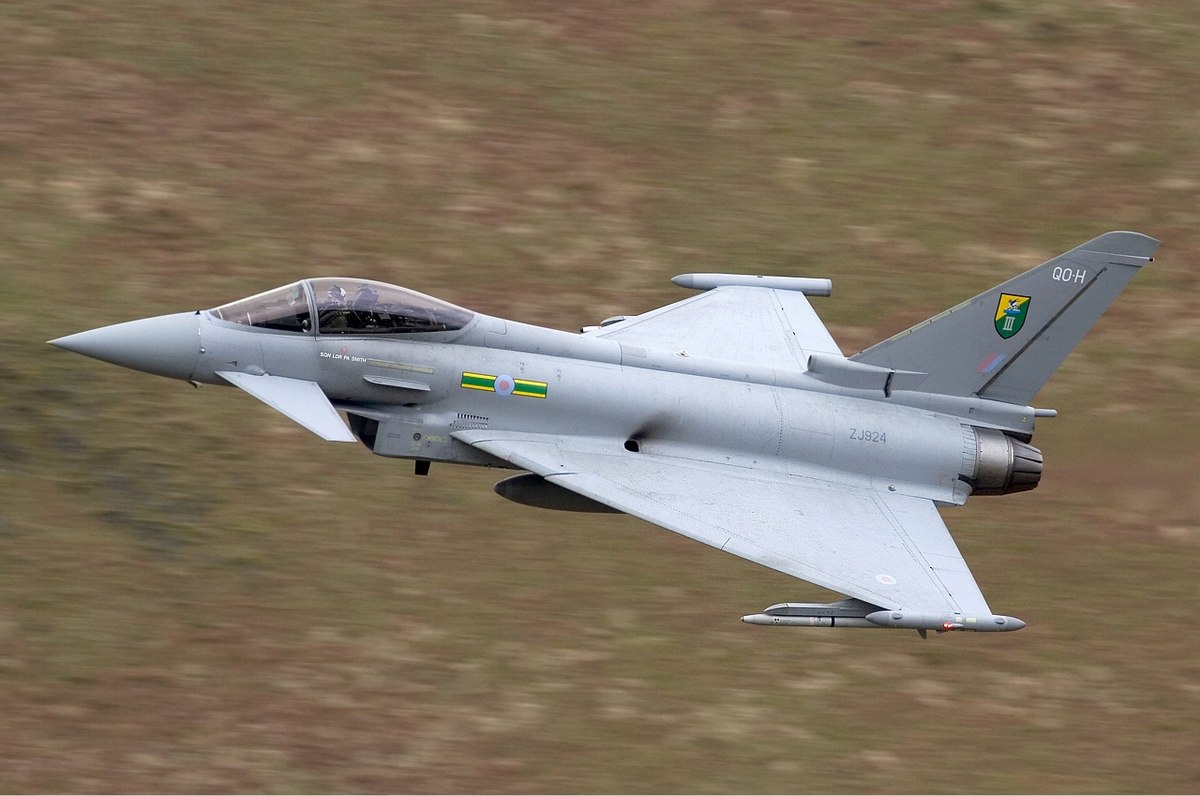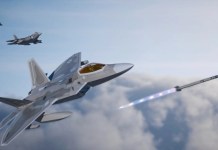The US F-35 Lightning II and F-22 Raptors are two of the world’s most advanced fifth-generation fighter jets. The Lockheed Martin stealth duo comes equipped with lethal air-to-air weapons, state-of-the-art avionics, and sensors posing a massive challenge to adversaries — China and Russia.
The EurAsian Times picks six advanced jets to see how they fare against either F-35 or F-22 Raptor.
China’s J-20 ‘Mighty Dragon’
The J-20 is a single-seat, fifth-generation, multirole stealth fighter jet built by Chinese state-run Chengdu Aerospace Corporation.
The research and development of the fifth-generation fighter jet began in the 1990s to meet the requirements of the People’s Liberation Army Air Force. The J-20 has since been dubbed the ‘Mighty Dragon’ in China while NATO has given it the codename ‘Black Eagle’.
The J-20 is said to be capable of reaching high altitudes and supersonic speeds and boasts some top-of-the-line features.
The aircraft comes with a glass cockpit enclosed with a bubble-shaped canopy. Two LCD and a head-up display (HUD) systems have been fitted into the aircraft. Furthermore, the J-20 can be operated using a traditional hands-on throttle and stick (HOTAS) system.

The aircraft is reportedly armed with an internal cannon for close-range combat missions. It has eight hardpoints and a large belly weapon bay to incorporate long-range PL-12C/D and PL-21 AAMs.
The fighter jet is also armed with two small lateral weapon bays beneath the air inlets to integrate PL-10 short-range AAMs. Additionally, it can carry air-to-surface missiles, anti-radiation missiles, laser-guided bombs, and drop bombs. According to some accounts, the weapons bay configuration is similar to the F-22.
The J-20 has a maximum takeoff weight (MTOW) of 34,000-37,000 kilograms and boasts an advanced communications suite allowing it to datalink to friendly platforms both in service and ones under development.
The aircraft may be upgraded with the indigenous WS-15 engine, potentially allowing the J-20 to fly at sustained supersonic travel (super-cruise).
This indigenous engine may rival the Pratt & Whitney F119 engine used by the F-22. The stealthy J-20 continues to remain shrouded in secrecy. However, experts believe that the aircraft packs a potent punch and can challenge the US’ F-35 fighter jet.
Russian Felons & Flankers
The Sukhoi Su-57 is a stealth-capable multi-role fifth-generation fighter jet being developed for the Russian Air Force. The Sukhoi Design Bureau touted the SU-57 to be a competitor of the US F-22 and even claims that it has an edge over the latter in dogfighting capabilities.
However, many analysts have been critical of the SU-57. For instance, Indian aviation experts had observed that the SU-57 lacked power; this coupled with a host of other perceived lapses led New Delhi to scrap a potential deal for the Indian Air Force.
Some analysts had even raised doubts if the SU-57 can be called a stealth fighter. However, its recent performances have helped tilt public perception back in its favor.
The SU-57 would need to use its afterburners to even remotely match the F-22’s speeds. However, doing so would forgo what little stealth profiles the SU-57 has.
Adding to Moscow’s woes with the project are the debilitating sanctions and falling oil prices, which continue to affect the Russian economy. All this has put a question mark on the fighter jet’s future.
On the other hand, the Su-35 is the latest variant in the Flanker family. The multirole aircraft has been developed by Sukhoi Design Bureau and is often termed as the most powerful fighter jet in the Russian armory which has even overshadowed the stealthy Su-57 jet.
The single-seat jet possesses a high degree of maneuverability. The Su-35 BM is armed with a potent array of weapons. It has a reported length of 21.9m, a wingspan of 15.3m, and a height of 5.9m, and holds the capacity to carry a maximum payload of 8,000kg.
The aircraft can fly at a maximum speed of 2,390km/h. The normal and ferry ranges of the aircraft are 3,600km and 4,200km respectively. The maximum altitude is 18,000m. The Su-35 weighs around 18,400kg and the maximum take-off weight is 34,500kg.
The SU-35BM entered serial production as the Su-35S for the Russian Air Force in 2010.
Lastly, the Sukhoi Su-30 (MKI is the Indian variant) is a multi-role combat fighter aircraft jointly developed by the Sukhoi Design Bureau Hindustan Aeronautics Limited (HAL).
The twin-seat aircraft has a length of 21.9m, a wingspan of 14.7m and a height of 6.4m and draws inspiration from the Su-30 fighter aircraft and comes equipped with thrust vectoring control and canards. The aircraft has an aerodynamic airframe made of titanium and high-intensity aluminum alloys.

The IAF set up a new 222 Squadron dubbed the Tigersharks at the Thanjavur airbase to operate this aircraft. The jets available to the new IAF squadron can deploy the BrahMos supersonic cruise missiles, which are the product of another joint Indo-Russia venture.
The aircraft’s glass cockpit comes with top-of-the-line avionics. The SU-MKI integrates a fly-by-wire (FBW) flight control system and a large monochromatic display screen which was installed in the rear cockpit provides guidance to air-to-ground missiles.
The Su-30MKI is fitted with N011M passive electronically scanned array radar (PESA), OLS-30 laser-optical locator system however going by reports, the N011M will be replaced with a new Zhuk AESA radar.
The Su-30MKI is armed with a 30mm Gsh-30-1 cannon with 150 rounds of ammunition and features 12 hardpoints capable of carrying external stores of up to 8t. The SU-30MKI can launch a range of air-to-surface missiles, including the Kh-29L/T/TYe, Kh-31A/P, Kh-59M, and Nirbhay missiles.
Many experts believe that the most-capable Russian jet that can challenge the might of US aircraft is the Su-35 that can match the F-22 Raptor in dogfighting and completely dominate F-35s in visual range combat.
Dassault Rafale
Developed by French Dassault Aviation, Rafale is a twin-jet combat aircraft capable of carrying out a wide range of short and long-range missions, ground and sea attacks including nuclear strike deterrence.
Development of the fighter began in July 1986 and the aircraft took its maiden flight the same month. The jet was designed for the French Airforce and Navy and has an overall length of 10.3 meters. It was also exported to a number of countries, including India, Egypt, and Qatar.
The Rafale B (two-seat variant) and the Rafale C, (single-seat variant) were inducted into the French Airforce in June 2006. The third variant, Rafale M (single-seat), is for naval aviation.
According to Dassault Aviation, all three versions of the multirole fighter ensure airframe and equipment commonality, along with similar operational capabilities.

The aircraft has been cleared to carry some of the most state-of-the-art weapon systems and smart munitions such as the MICA, METEOR, HAMMER, SCALP, AM39 EXOCET, Laser-guided bombs with different warheads, Classic non guided bombs, the 2500 rounds/min NEXTER 30M791 30 mm internal cannon (available on both single and two-seaters) along with client-specific armaments.
This perceived operational flexibility makes Rafale an effective deterrent against both traditional and asymmetric threats. Furthermore, the aircraft’s multi-sensor-data-fusion is touted to be a big plus by the manufacturer. The fighter jet has been battle-tested in Afghanistan, Mali, Libya, Syria, and Iraq.
Experts say Rafale is a powerful fighter jet with a great variety of beyond visual range weapons that can match the F-35 ‘missile for a missile’.
In one-to-one combat, the F-35 should be able to detect the Rafales early giving them an advantage, however, if the powerful twin-engine jet can evade the initial onslaught, the Rafales can seriously turn the tide in its favor and dent the American reputation.
Eurofighter Typhoon
The four-nation Eurofighter Typhoon is a foreplane delta-wing, beyond-visual-range, close air fighter aircraft with surface attack capability. It is currently used by the UK Royal Air Force, Luftwaffe (Germany), the Italian Air Force, and the Spanish Air Force.

The Eurofighter has a reported wingspan of 35 feet and 11 inches, an overall length of 52 feet and 4 inches, and can fly up to an effective range of 2,900 kilometers. The aircraft can be armed with a multitude of smart weapons depending on the type of operational role it is undertaking and boasts effective countermeasures.
The Typhoon is constructed of carbon-fiber composites, glass-reinforced plastic, aluminum-lithium, titanium, and aluminum casting. The aircraft’s stealth profile includes low frontal radar cross-section, passive sensors, and super-cruise ability.
The Typhoon’s foreplane/delta configuration is aerodynamically unstable by design allowing it a superior degree of agility especially at supersonic speeds), low drag, and enhanced lift.
As of 2019 over 600 Typhoon jets have been sold to the UK, Italy, Spain, Germany, Austria, Oman, and Saudi Arabia. Germany placed an order for 38 Eurofighter Typhoon aircraft in November 2020.
According to experts, the Typhoons are similar to French Rafales in combat capabilities. Stealthy F-35s might see the Typhoons first, however, if the Typhoon can evade the initial BVR missiles, the European jet could overshadow the US jet in one-to-one combat.
More @ EurAsian Times
- US Experiments With ‘Revolutionary Air Combat Training’ For Fighter Pilots To Dogfight Russian, Chinese Jets
- Despite J-20 Stealth Jet, Why Is China Keen To Acquire Another Stealth Fighter – Russian Su-57 To Its Arsenal?




